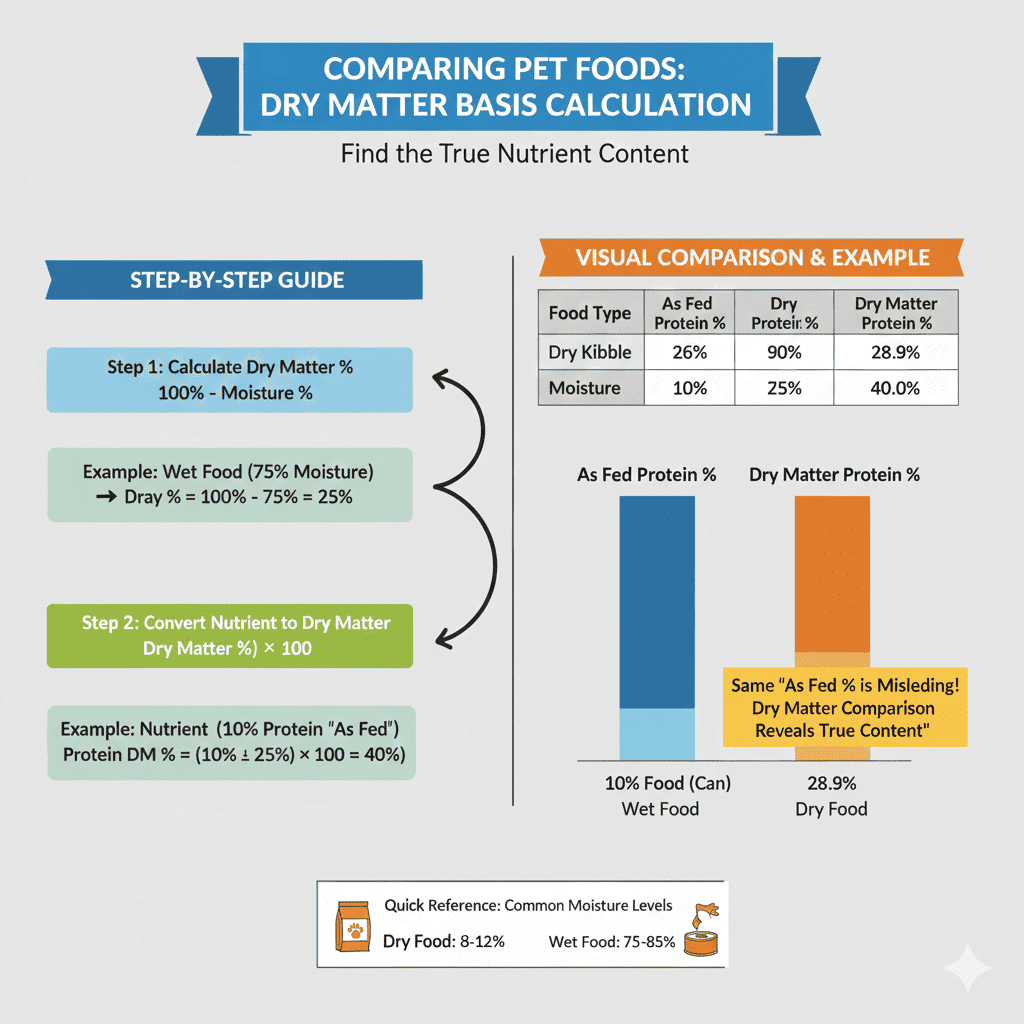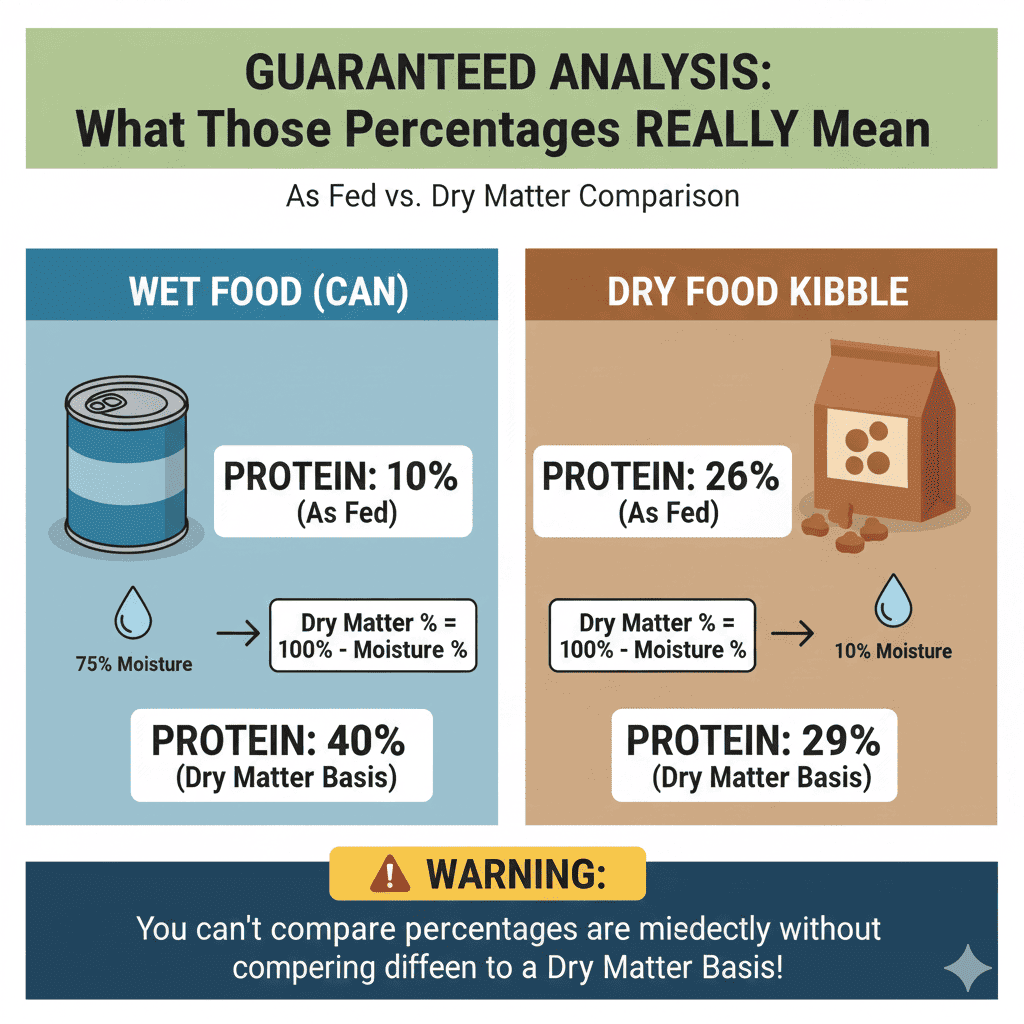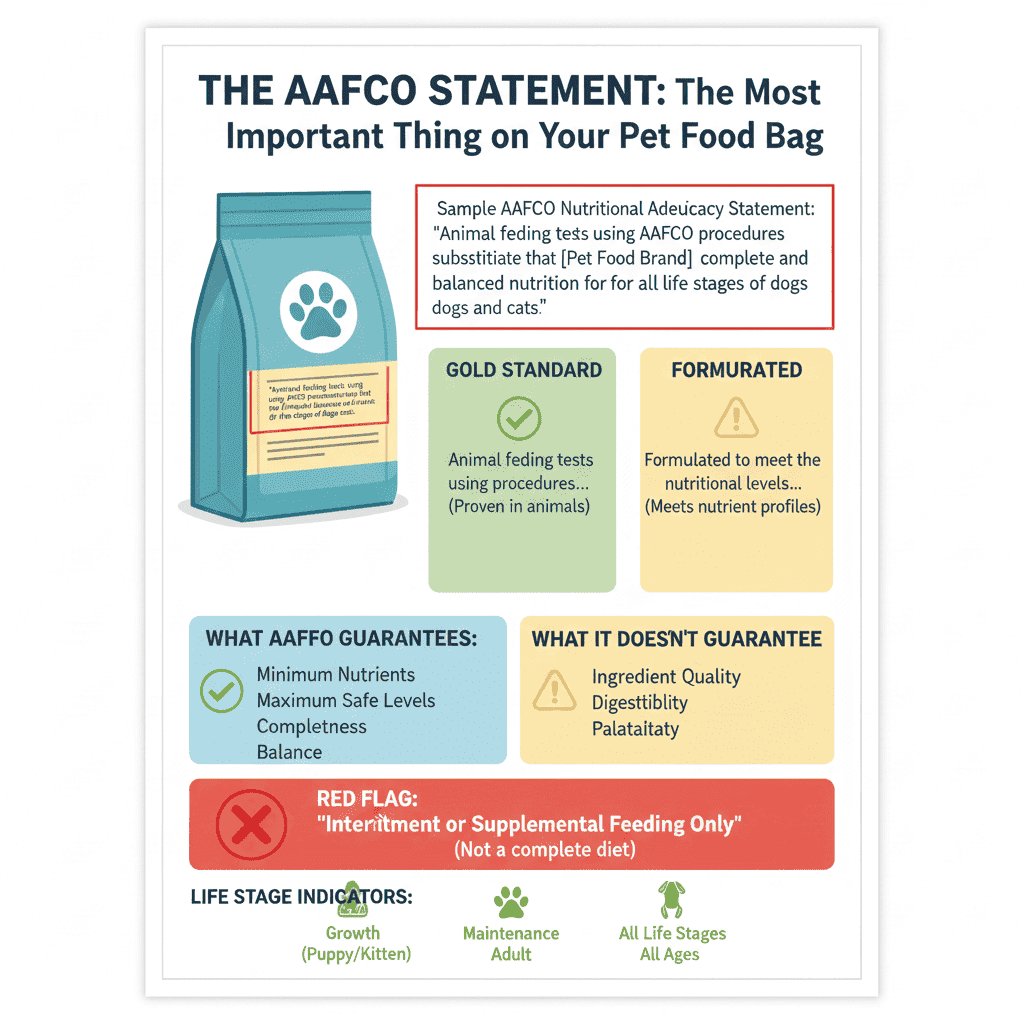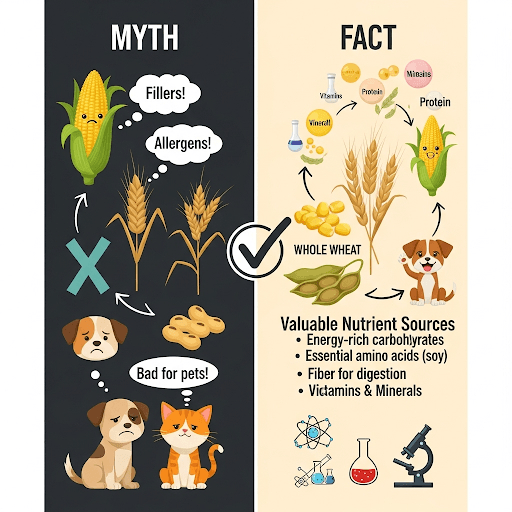You're standing in the pet food aisle, comparing a can of wet food to a bag of dry food. The wet food shows 10% protein, and the dry food shows 26% protein. The dry food seems like the obvious choice—but you'd be wrong.
Here's the problem: those percentages are shown "as fed," which includes the water in the food. Wet food contains about 75% water, while dry food contains only about 10% water. To make a fair comparison, you need to remove the water and compare only the actual food—this is called comparing on a "dry matter basis."
Learning to convert to dry matter basis is one of the most important skills for any pet owner who wants to make informed feeding decisions. It's the difference between making accurate comparisons and being misled by misleading numbers.
Why Dry Matter Basis Matters
The Moisture Problem
Wet food example:
- 75% moisture (water)
- 10% protein "as fed"
- Only 25% is actual food
- The protein is concentrated in that 25%
Dry food example:
- 10% moisture
- 26% protein "as fed"
- 90% is actual food
- The protein is spread across that 90%
The issue: You can't compare 10% to 26% directly because they're percentages of different total amounts. It's like comparing 10% of a small pizza to 26% of a large pizza—the actual amounts might be very different.
Real-World Impact
Without dry matter basis conversion:
- ❌ You might choose a food that seems higher in protein but actually isn't
- ❌ You might overfeed or underfeed your pet
- ❌ You can't accurately compare wet vs. dry foods
- ❌ You might make decisions based on misleading information
With dry matter basis conversion:
- ✅ You can accurately compare any foods
- ✅ You make informed decisions
- ✅ You understand what your pet is actually getting
- ✅ You can mix wet and dry foods intelligently

The Dry Matter Basis Formula
Step 1: Calculate Dry Matter Percentage
Dry Matter % = 100% - Moisture %
Example:
- Food has 10% moisture
- Dry matter = 100% - 10% = 90%
Step 2: Convert Nutrient to Dry Matter Basis
Dry Matter Nutrient % = (As Fed Nutrient % ÷ Dry Matter %) × 100
Example:
- Protein: 26% (as fed)
- Moisture: 10%
- Dry matter: 90%
- Dry matter protein: (26% ÷ 90%) × 100 = 28.9%
Step-by-Step Examples
Example 1: Comparing Wet and Dry Foods
Food A - Dry Kibble:
- Protein: 26% (as fed)
- Fat: 15% (as fed)
- Moisture: 10%
Food B - Wet Food:
- Protein: 10% (as fed)
- Fat: 5% (as fed)
- Moisture: 75%
Step 1: Calculate Dry Matter for Each
Food A:
- Dry matter = 100% - 10% = 90%
Food B:
- Dry matter = 100% - 75% = 25%
Step 2: Convert Protein to Dry Matter Basis
Food A:
- Dry matter protein = (26% ÷ 90%) × 100 = 28.9%
Food B:
- Dry matter protein = (10% ÷ 25%) × 100 = 40%
Result: Food B (wet food) actually has MORE protein than Food A (dry food), even though the "as fed" percentages suggested otherwise!
Step 3: Convert Fat to Dry Matter Basis
Food A:
- Dry matter fat = (15% ÷ 90%) × 100 = 16.7%
Food B:
- Dry matter fat = (5% ÷ 25%) × 100 = 20%
Result: Food B also has more fat on a dry matter basis.
Example 2: Comparing Two Dry Foods
Food A:
- Protein: 24% (as fed)
- Moisture: 10%
- Dry matter: 90%
- Dry matter protein = (24% ÷ 90%) × 100 = 26.7%
Food B:
- Protein: 26% (as fed)
- Moisture: 12%
- Dry matter: 88%
- Dry matter protein = (26% ÷ 88%) × 100 = 29.5%
Result: Food B has more protein, but the difference is smaller than the "as fed" percentages suggested (2% difference as fed vs. 2.8% difference dry matter).
Example 3: Comparing Two Wet Foods
Food A:
- Protein: 9% (as fed)
- Moisture: 78%
- Dry matter: 22%
- Dry matter protein = (9% ÷ 22%) × 100 = 40.9%
Food B:
- Protein: 11% (as fed)
- Moisture: 80%
- Dry matter: 20%
- Dry matter protein = (11% ÷ 20%) × 100 = 55%
Result: Food B has significantly more protein, and the dry matter comparison shows a much larger difference than the "as fed" percentages (2% difference as fed vs. 14.1% difference dry matter).
Quick Reference: Common Moisture Levels
Dry Foods:
- Typical range: 8-12% moisture
- Dry matter: 88-92%
Semi-Moist Foods:
- Typical range: 25-35% moisture
- Dry matter: 65-75%
Wet/Canned Foods:
- Typical range: 75-85% moisture
- Dry matter: 15-25%
Raw/Fresh Foods:
- Typical range: 60-70% moisture
- Dry matter: 30-40%
When You Need Dry Matter Basis
Always Convert When:
✅ Comparing wet vs. dry foods ✅ Comparing foods with different moisture contents ✅ Mixing wet and dry foods (to understand total intake) ✅ Comparing different brands (moisture levels vary) ✅ Feeding prescription diets (to understand modifications)
You Don't Need to Convert When:
❌ Comparing similar foods (both dry, both wet, same moisture) ❌ Quick reference (if moisture is the same) ❌ Single food evaluation (if not comparing)
Practical Application: Mixing Wet and Dry Foods
Many pet owners mix wet and dry foods. To understand what your pet is getting, convert both to dry matter basis:
Example: 50/50 Mix
Daily feeding:
- 1 cup dry food (400 kcal, 26% protein as fed, 10% moisture)
- 1 can wet food (200 kcal, 10% protein as fed, 75% moisture)
Step 1: Convert Each to Dry Matter
Dry food:
- Dry matter protein = (26% ÷ 90%) × 100 = 28.9%
Wet food:
- Dry matter protein = (10% ÷ 25%) × 100 = 40%
Step 2: Calculate Weighted Average
Total calories: 400 + 200 = 600 kcal
Dry food portion: 400/600 = 66.7% of calories Wet food portion: 200/600 = 33.3% of calories
Combined protein (dry matter):
- (28.9% × 66.7%) + (40% × 33.3%) = 19.3% + 13.3% = 32.6%
Result: Your pet is getting approximately 32.6% protein (dry matter basis) from this combination.
Common Mistakes to Avoid
Mistake 1: Comparing "As Fed" Percentages Directly
Wrong:
- "This food has 26% protein, that one has 10% protein, so the first is better."
Right:
- Convert both to dry matter basis first, then compare.
Mistake 2: Forgetting to Account for Moisture
Wrong:
- Assuming all foods have the same moisture content.
Right:
- Always check moisture percentage and account for it.
Mistake 3: Only Looking at One Nutrient
Wrong:
- Choosing food based solely on protein percentage.
Right:
- Consider all nutrients, ingredient quality, and your pet's needs.
Mistake 4: Not Converting When Mixing Foods
Wrong:
- Assuming you can just average "as fed" percentages.
Right:
- Convert to dry matter basis, then calculate weighted averages.
Tools and Shortcuts
Quick Mental Math
For common scenarios:
Dry food (10% moisture):
- Multiply "as fed" by 1.11 (100 ÷ 90)
- Example: 26% × 1.11 = 28.9%
Wet food (75% moisture):
- Multiply "as fed" by 4 (100 ÷ 25)
- Example: 10% × 4 = 40%
Wet food (80% moisture):
- Multiply "as fed" by 5 (100 ÷ 20)
- Example: 10% × 5 = 50%
Online Calculators
Many pet nutrition websites offer dry matter basis calculators. Simply input:
- Nutrient percentage (as fed)
- Moisture percentage
- Get instant dry matter basis result
The Bottom Line
Comparing foods on a dry matter basis is essential for making accurate feeding decisions. Without it, you're comparing apples to oranges—or more accurately, comparing foods with different amounts of water.
Key takeaways:
- ✅ Always convert to dry matter basis when comparing foods with different moisture contents
- ✅ Wet foods often have higher nutrient percentages on a dry matter basis than they appear
- ✅ Dry matter basis shows the true nutrient content of the actual food
- ✅ Use this skill when mixing wet and dry foods
- ✅ Don't be misled by "as fed" percentages
Mastering dry matter basis conversion puts you in control of your pet's nutrition. You'll be able to make informed comparisons, understand what your pet is really getting, and make better feeding decisions.
Ready to compare foods accurately? Use our pet meal planner to find foods that meet your pet's needs, and use dry matter basis to make sure you're comparing them fairly.
For more information on understanding pet food labels, see our articles:


